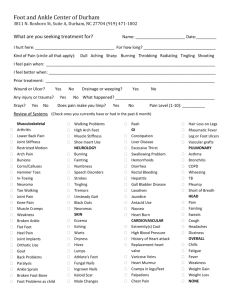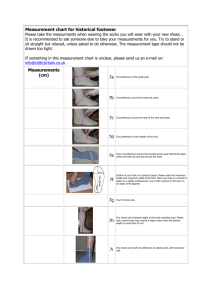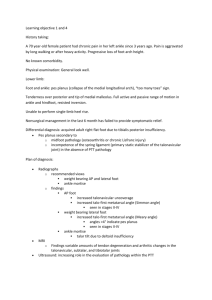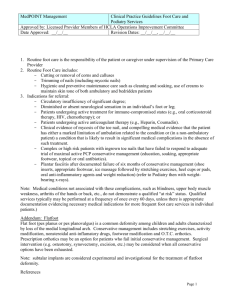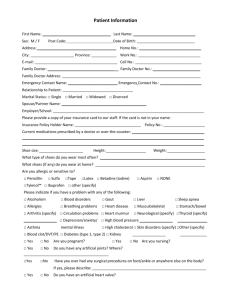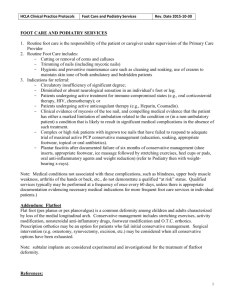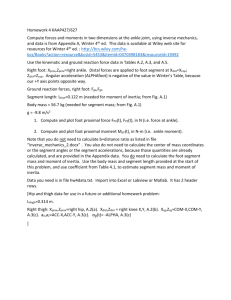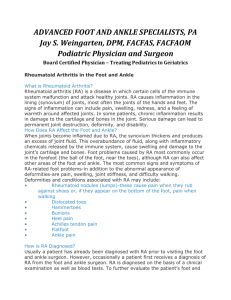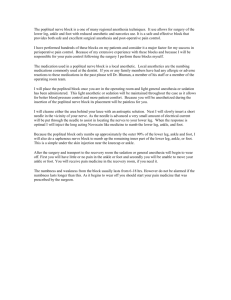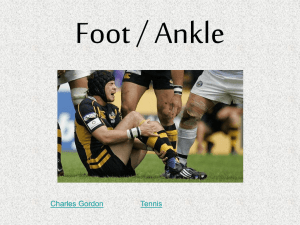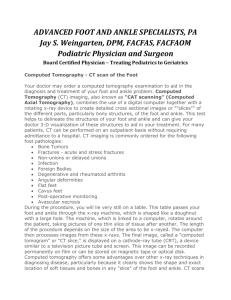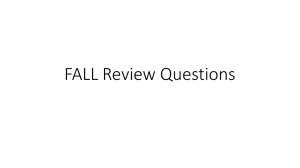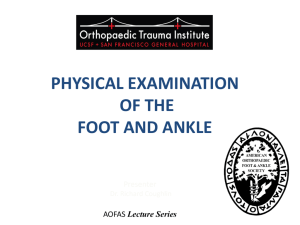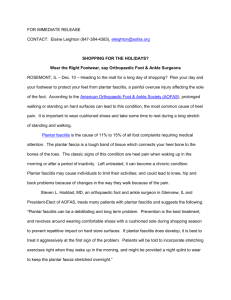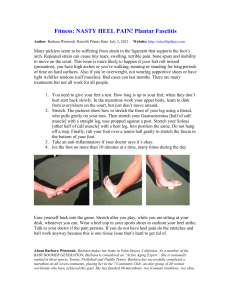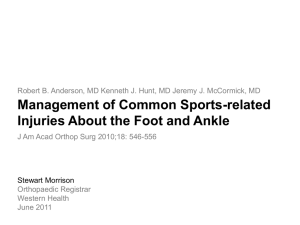Ankle and foot
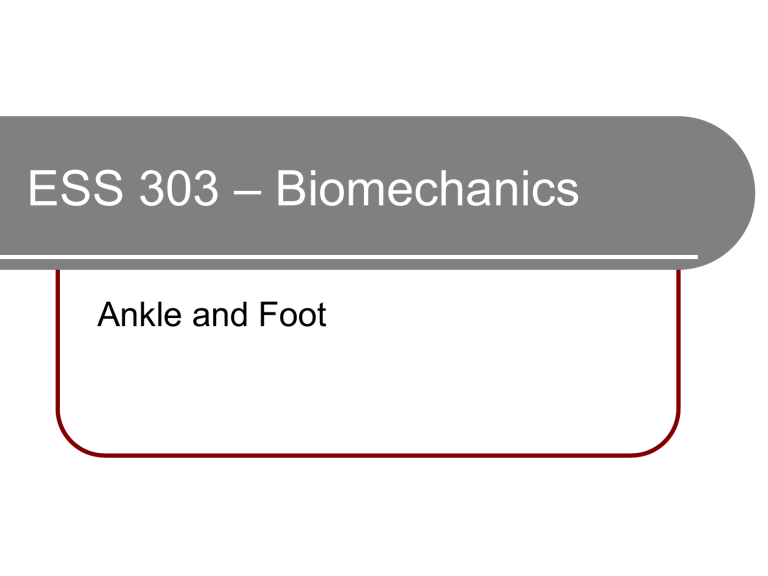
ESS 303 – Biomechanics
Ankle and Foot
Tibiofibular Joint
Similar to radioulnar joint
Superior tibiofibular joint
Middle tibiofibular joint (interosseus membrane)
Inferior tibiofibular joint
Rotational movements not called pronation or supination
Ankle Joint
Distal tibia and fibula articulates with talus
Hinge joint – sagital plane
Flexion – dorsiflexion (about 20°)
Extension – plantarflexion or volar flexion (30-50°)
Some transverse plane (rotational) movement possible
7 ° medial, 10 ° lateral
Some frontal plane (side-to-side tilt) movement possible
≈ 5 ° frontal talar tilt
Foot Positions
Subtalar or talocalcaneal joint
Inversion & eversion
Pronation = ankle dorsiflexion + subtalar (calcaneal) eversion + forefoot abduction (external rotation)
Supination = ankle plantarflexion + subtalar (calcaneal) inversion + forefoot adduction (internal rotation)
Foot Positions
Arches of the Foot
Arches of the Foot
Arch Positions
Normal
High arch: Pes cavus
Low arch (flat foot): Pes planus
Ankle Joint Stability
Distal ends of tibia and fibula – like mortise (pinchers) of adjustable wrench
Tibia is weight bearing
Fibula is considered non-weight bearing
– may hold up-to 10% of body weight
Multiple ligaments
Ligaments and Sprains
Ligaments and Sprains
Return to Activity
Must have complete range of motion and at least 80-90% of pre-injury strength before return to sport
If full practice is tolerated w/out insult, athlete can return to competition
Must involve gradual progression of functional activities, slowly increasing stress on injured structure
Movements & Major Muscles
Dorsiflexion: Tibialis anterior
Plantar flexion: Gastrocnemius & soleus
Inversion: Tibialis anterior, peroneus longus & peroneus brevis
Eversion: Peroneus tertius
Biomechanics of Gate
Stance phase (60-65%)
Heel contact (heel strike or initial contact)
Foot flat (loading response)
Mid stance
Heel off (terminal stance)
Toe off
Swing phase (35-40%)
Toe off (acceleration or initial swing)
Mid swing
Heel contact (deceleration or terminal swing)
Single Limb Weight Bearing
Pelvis forms a 1st class lever
Hip is fulcrum, resistance force is body weight, effort force is from abductors and adductors
Body is drawn over supporting leg by adductor muscles
Hip abductors of the support leg prevent the pelvis from dropping on the opposite
(unsupported) side
Knee Joint and Gate
Knee Joint and Gate
Chimpanzee: medial and lateral condyle similar
Human: medial condyle larger than lateral condyle – allows
COM to shift over foot
Advantages/disadvantages to Bipedal
Locomotion
Disadvantages
Loss of speed
Loss of agility
Advantages
Carry food
Carry tools
Increased ability to nurture/protect offspring
Enable to give birth more often

